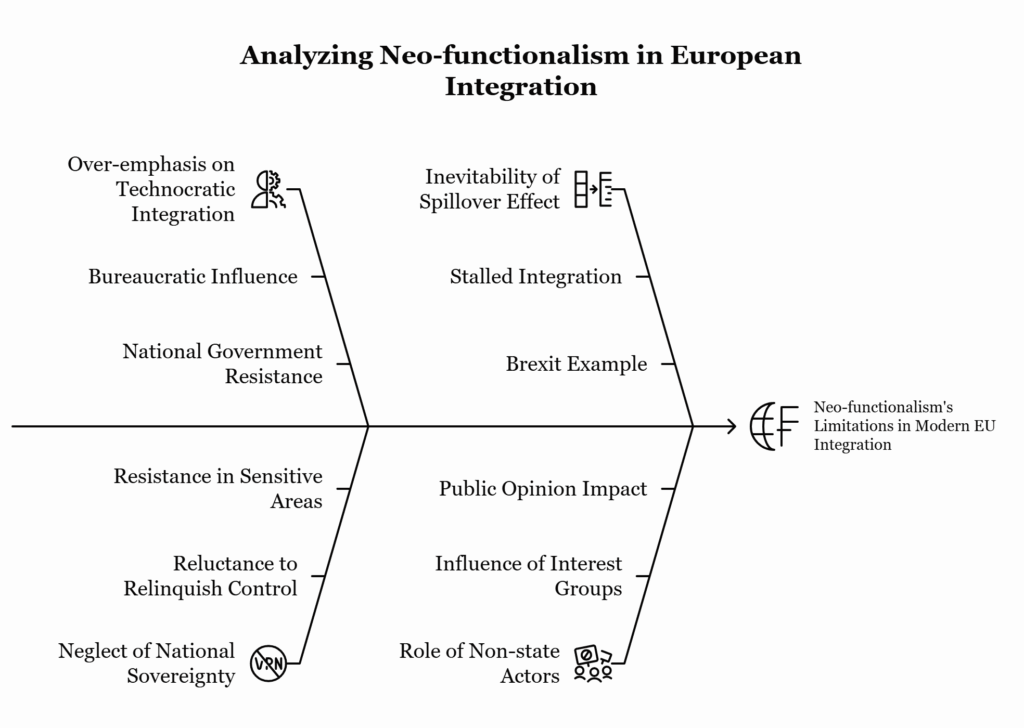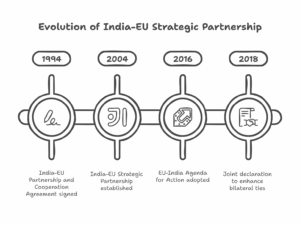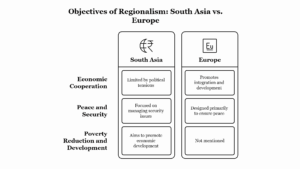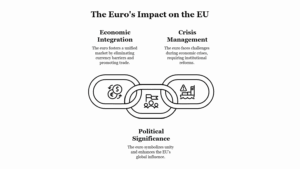Neo-functionalism, as a theory of European integration, emerged in the mid-20th century, primarily articulated by Ernst B. Haas. It seeks to explain how integration progresses in regional groupings like the European Union by focusing on the role of non-governmental actors (such as interest groups and technocrats) and spillover effects that drive further cooperation. The theory contrasts with intergovernmentalism, which stresses the primacy of state sovereignty and government control. Neo-functionalism emphasizes that integration is a gradual and dynamic process catalyzed by technical cooperation and institutional change.
1. Core Principles of Neo-functionalism
At the heart of neo-functionalism lies the concept of spillover. Haas argued that cooperation in one area of policy (typically economic) generates pressures for integration in related areas, creating a snowball effect. For example:
- Economic integration in the steel and coal sectors (through the European Coal and Steel Community, ECSC) necessitated further cooperation in areas like trade, labor, and transportation.
- Over time, as countries began to cooperate on technical matters, they found it increasingly difficult to maintain distinct national policies, thus encouraging a gradual extension of integration.
The theory posits that once states take the first step toward integration, the interests of non-state actors (businesses, labor unions, technocrats) push for the removal of barriers in other sectors, leading to an expansion of the cooperative framework. The European Commission, as a key supranational institution, is seen as a primary driver of this process, facilitating integration through its expertise and neutral stance.
2. Spillover Mechanism and its Role in European Integration
Neo-functionalism is predicated on the idea that integration in one sector often leads to unintended consequences or spillovers that make integration in other sectors inevitable. This spillover effect can take two forms:
- Functional spillover: when functional cooperation in one area necessitates policy coordination in others. For example, the establishment of a single market for goods in the European Economic Community (EEC) required the harmonization of rules in customs, transportation, and monetary policy.
- Political spillover: as integration deepens, domestic political pressures emerge for broader cooperation, thus pushing integration to new levels. The involvement of interest groups and bureaucratic actors in the EU further encourages this expansion of cooperation beyond its initial scope.
This theory accounts for gradual and incremental integration, where early agreements in economic sectors lead to broader political, social, and legal integration.
3. Supranational Institutions and Technocratic Integration
Another important aspect of neo-functionalism is the role of supranational institutions, particularly the European Commission, in pushing integration forward. Unlike intergovernmentalism, which places the national governments at the center of decision-making, neo-functionalism emphasizes the independence and influence of technocratic bodies in driving forward integration. These technocratic institutions, equipped with specialized knowledge and the support of interest groups, often have the ability to circumvent national governments in pushing for new policies.
The European Court of Justice (ECJ) and the European Parliament also play key roles in supporting integration. The Court, for instance, has been instrumental in ensuring the primacy of EU law over national law, further embedding European integration.
4. Critiques and Limitations of Neo-functionalism
While neo-functionalism has been an influential theory in understanding European integration, it has faced substantial criticism over time, particularly in light of developments in the EU since its formulation. Critics argue that the theory is overly optimistic about the role of non-state actors and the power of supranational institutions. Some of the primary critiques include:
- Over-emphasis on technocratic integration: Neo-functionalism places significant faith in the ability of bureaucrats and technocrats to drive integration. However, this view has been challenged by the growing importance of national governments in decision-making, particularly since the Maastricht Treaty (1992), which introduced intergovernmental elements and required unanimity on major decisions in areas like foreign policy.
- Neglect of the role of national sovereignty: One of the central critiques is that neo-functionalism underestimates the reluctance of states to relinquish sovereignty. The theory assumes that once integration starts, it will continue inexorably, but in reality, national governments have shown a capacity to resist further integration, particularly in sensitive areas like fiscal policy, defense, and immigration.
- The “spillover” effect is not always inevitable: There are cases where integration has stalled or reversed. For instance, the Brexit referendum in 2016 demonstrated that integration is not necessarily a one-way process. The increasing role of public opinion and nationalism within European states also challenges the assumption that integration will always spread from one area to another.
5. Relevance of Neo-functionalism Today
Despite these critiques, neo-functionalism remains a useful framework for understanding certain aspects of European integration, especially in the early phases of the EU’s development. The theory is particularly effective in explaining the gradual expansion of cooperation in areas like trade, competition policy, and environmental regulation. However, in light of contemporary developments such as the rise of populism, Euroscepticism, and nationalism across Europe, it is clear that neo-functionalism needs to be supplemented by other theories like intergovernmentalism or multilevel governance to explain modern EU integration fully.

Conclusion
Neo-functionalism provides valuable insights into the mechanisms that drive European integration, especially the role of spillover effects and the influence of supranational institutions. However, its limitations—particularly the underestimation of national sovereignty and the role of political actors—necessitate a more nuanced approach to understanding the complex and multifaceted process of European integration. In today’s context, it is essential to consider a blend of theories to explain both the advances and setbacks in the European integration project.








Leave a Reply